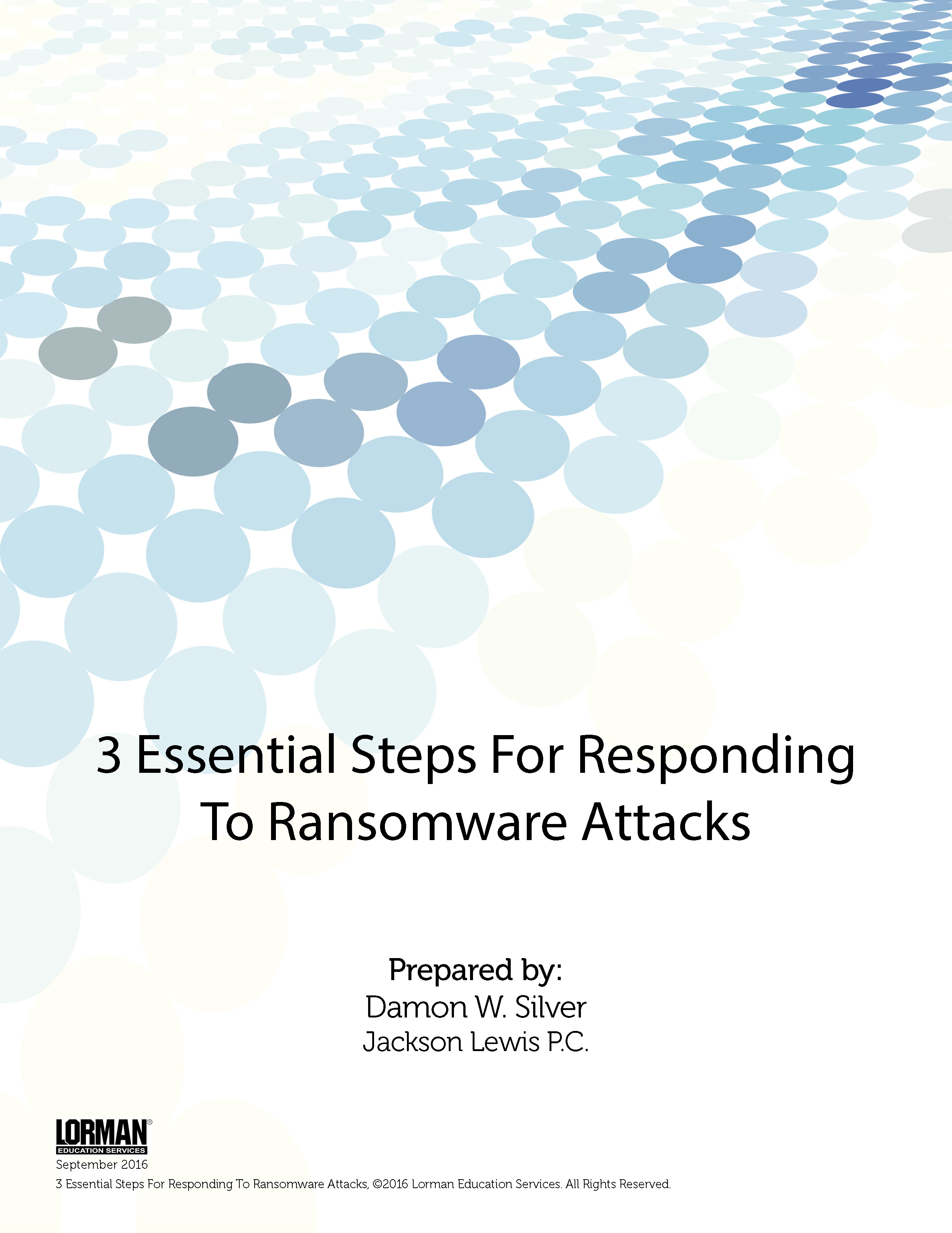What Is Ransomware?
Ransomware is a type of malware that denies the affected user access to his or her data, typically by encrypting it. Once the user’s data is encrypted, the hacker who launched the ransomware attack notifies him or her that, in order to obtain a key to decrypt the data, he or she must pay a ransom, often in a cryptocurrency such as Bitcoin. Hackers sometimes impersonate government entities – like the IRS or FBI – in their ransom notes.
Can I Just Pay The Ransom And Move On?
While it may be tempting to do so, there are serious risks to this approach. Even if the ransom demanded by a ransomware hacker is not prohibitively expensive, an organization victimized by an attack must bear in mind that simply paying off the hacker is unlikely to make its problems go away.
Download this white paper to continue reading …
Damon W. Silver, Esq. is an associate in the New York City office of Jackson Lewis P.C. He is a member of the firm’s Privacy e-Communication and Data Security Group. Mr. Silver has written several publications on topics relating to privacy and data security.
Agenda
Faculty
Damon W. Silver, Esq.
Jackson Lewis P.C.
- Associate in the New York City office of Jackson Lewis P.C.
- Member of the firm’s Privacy e-Communication and Data Security Group
- Wrote several publications on topics relating to privacy and data security
- J.D. degree, NYU School of Law
- Can be contacted at 212-545-4063 or [email protected]
All of your training, right here at Lorman.
Pay once and get a full year of unlimited training in any format, any time!
- Live Webinars
- OnDemand Webinars
- MP3 Downloads
- Course Manuals
- Audio Recordings*
- Executive Reports
- White Papers and Articles
- Sponsored Live Webinars
Additional benefits include:
- State Specific Credit Tracker
- Members Only Newsletter
- All-Access Pass Course Concierge
* For audio recordings you only pay shipping
Questions? Call 877-296-2169 to speak with a real person.
Thank You!
Download White PaperMore Program Information

Access to all training products $699/year
Unlimited Lorman Training
With the All-Access Pass there is no guessing what you will need for your yearly training budget. $699 will cover all of your training needs for an entire year!
Easy Registrations
Once you purchase your All-Access Pass you will never be any further than one-click away from attending any Lorman training course.
Invest in Yourself
You haven't gotten to where you are professionally by luck alone; it's taken a lot of hard work and training. Invest in yourself with the All-Access Pass.